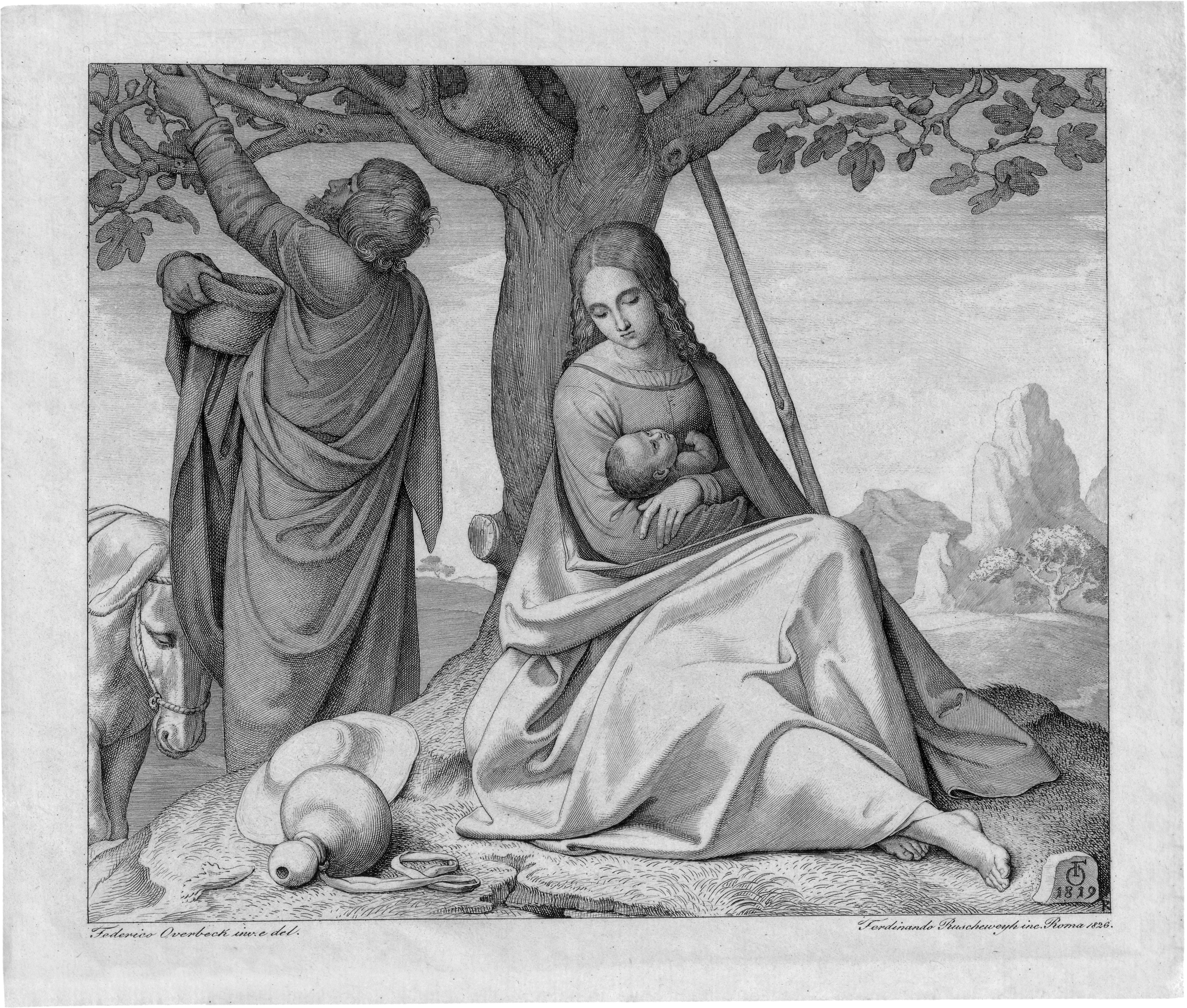Loading the page ...
Ferdinand Ruscheweyh
(1785–1846, Neustrelitz)
Rest on the Flight into Egypt. Engraving on fine China paper after Friedrich Overbeck. 14.3 x 17.1 cm. 1826. Nagler 19, Apell 7.
This very rare sheet, executed with the utmost precision and technical finesse, is based on a design by Friedrich Overbeck, the whereabouts of which remain a mystery to this day. It was probably a drawing that arose in conjunction with an oil painting made by the prominent Nazarene artist. We only know its year of origin, 1819, from Ruscheweyh’s engraving, in which he inserted the year beneath Overbeck’s artist’s monogram. All that is known about the painting by Overbeck is that it was once exhibited in the Palazzo Caffarelli in Rome. Since then it has been lost without trace (see Margaret Howitt, Friedrich Overbeck. Sein Leben und Schaffen, Freiburg im Breisgau, 1886, vol. 2, p. 406).
The delightful engraving with its wonderfully subtle differentiation conveys a vivid impression of Overbeck’s lost original. Ruscheweyh uses extremely delicate, nuanced strokes to depict the harmonious scene of the Holy Family resting under a fig tree, while the finely gradated tonal values create an impressive spatial depth. Overbeck’s imaginative, highly symbolic imagery is apparent in his choice of a fig tree, given that the story in Gospel refers to a date palm whose fruit Joseph picks. The motif of the fig tree, which Overbeck regularly selected for religious subjects, probably alludes to its interpretation as a symbol of the people or the land of Israel (see Charles Davis, Auf den Spuren der Nazarener: Re-reading Vittoria Caldoni: Friedrich Overbeck’s “Portrait” in the Neue Pinakothek, Heidelberg, 2013, p. 48f.).
The author of the print, Ferdinand Ruscheweyh, first studied under Daniel Berger in Berlin and later attended the Vienna Academy. In 1808 he went to Rome, where he joined the group of Nazarenes around Peter von Cornelius and Friedrich Overbeck and became one of its leading reproductive engravers. He lived and worked in the city until 1832. A superb, extremely concise and nuanced impression with narrow margins around the framing line. Minimal traces of handling, otherwise in excellent condition.
Contact us for further information